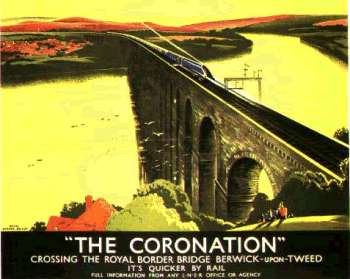Feature




Home

Accidents

Recent Reports

Features

Gallery

Stop Press

Links

Site Map

Help Page

Search

Bibliography

Glossary

 The Need for Speed
The Need for Speed
 Today, speed is a big selling point for any passenger transit operation. An operator can steal a march on a rival by speeding up a competing service or offering a quicker alternative. The Eurostar service through the Channnel tunnel from London to Paris/Brussels has been positioned as a direct competitor with the airlines. Air travel has traditionally offered the quickest mode between two points. Now, the Channel tunnel expresses with their "seamless" travel opportunities can be seen by passengers to offer an alternative which can compete on city-centre to city-centre timings.
Today, speed is a big selling point for any passenger transit operation. An operator can steal a march on a rival by speeding up a competing service or offering a quicker alternative. The Eurostar service through the Channnel tunnel from London to Paris/Brussels has been positioned as a direct competitor with the airlines. Air travel has traditionally offered the quickest mode between two points. Now, the Channel tunnel expresses with their "seamless" travel opportunities can be seen by passengers to offer an alternative which can compete on city-centre to city-centre timings.|
Crack Express Wrecked Train Race cause of Death Smash Salisbury - 1906 In 1906, the competition between the Great Western and the London & South Western railways for traffic from transatlantic liners was at its height. Both companies competed on the speed with which they could get their special boat trains from Plymouth to London. It remains a mystery why, on 30 June 1906 the driver of the South Western company's train failed to heed the permanent speed restriction in force at Salisbury station... |
 Before the advent of accessible air travel, it was the trains that offered the speediest option to travellers. The continued development of the steam locomotive led to some land-speed records being broken in the early part of the century:
Before the advent of accessible air travel, it was the trains that offered the speediest option to travellers. The continued development of the steam locomotive led to some land-speed records being broken in the early part of the century:
- 1904 "City of Truro" UK - 100 mph (160 km/h)
- 1934 "Papyrus" UK - 108 mph (174 km/h)
- 1935 "Silver Link" UK - 112 mph (181km/h)
- 1935 "Hiawatha" USA - 112 mph (181km/h)
- 1936 "05001/2" Germany 124 mph (200 km/h)
- 1938 "Mallard" UK 126 mph (208km/h)
 These were honours indeed for the railway companies involved and no doubt led to increased revenues for the companies concerned as the public's imagination was fired. However, valuable as speed is, it must be kept under control.
These were honours indeed for the railway companies involved and no doubt led to increased revenues for the companies concerned as the public's imagination was fired. However, valuable as speed is, it must be kept under control.
 Naturally, along with the ability to travel ever faster, there is an expectation that trains will also have the ability to stop. Bringing a heavy and fast moving train to a halt is a far from simple. Not only does the kinetic energy stored have to be dissipated, but maintaining the adhesion between steel wheels on steel rails under braking forces adds a complicating factor. It is extrordinary to consider that the earliest steam locomotives were not equipped with any form of brakes. The tenders of these engines had screw brakes that operated on the wheels of the tender. Supplemental brakes were fitted on some coaches, but were not under the direct control of the driver. A brakesman operated these brakes and an elaborate system of engine-whistle codes had to be devised to alert the brakesmen to the fact that the driver wanted the brakes applied or released.
Naturally, along with the ability to travel ever faster, there is an expectation that trains will also have the ability to stop. Bringing a heavy and fast moving train to a halt is a far from simple. Not only does the kinetic energy stored have to be dissipated, but maintaining the adhesion between steel wheels on steel rails under braking forces adds a complicating factor. It is extrordinary to consider that the earliest steam locomotives were not equipped with any form of brakes. The tenders of these engines had screw brakes that operated on the wheels of the tender. Supplemental brakes were fitted on some coaches, but were not under the direct control of the driver. A brakesman operated these brakes and an elaborate system of engine-whistle codes had to be devised to alert the brakesmen to the fact that the driver wanted the brakes applied or released.
 The issue of train brakes was one which was to test railway engineers in the nineteenth century and will be the subject of a future Danger Ahead article.
The issue of train brakes was one which was to test railway engineers in the nineteenth century and will be the subject of a future Danger Ahead article.
 Injudicious use of, or uncontrolled speed have been the causes of many accidents. Some of these are examined here:
Injudicious use of, or uncontrolled speed have been the causes of many accidents. Some of these are examined here:
 BACK
BACK
STOP SIGNAL
 Top
Top
 Contents | Index of Accidents | Features | Recent Reports | Links | Site Map | Guestbook | E-mail
Contents | Index of Accidents | Features | Recent Reports | Links | Site Map | Guestbook | E-mail